Amid the blare of power tools and the clatter of hammers, construction workers battle more than just the intricacies of their craft. Inclement weather, particularly rainfall, emerges as a uncontrollable nemesis, capable of bringing progress to an unwanted halt. As the clouds gather and the first drops strike the ground, not only does the work pace begin to decrease, but also the risks of occupational hazards amplify. However, equipped with the right rain gear, construction workers can stave off the effects of bad weather, ensuring their vital work continues unhindered.
In this comprehensive guide, we delve into the significance of having proper rain gear for construction workers, investigating its impact on worker safety and overall productivity. We'll look into various types of rain gear, including everything from rain jackets and parkas to waterproof boots and gloves. Additionally, we'll provide insights on the most effective materials used in making rain gear, as well as important factors to consider when choosing this essential attire. And lastly, to ensure the longevity of your gear, we'll discuss a few handy tips on its maintenance. So, whether you're a seasoned construction professional or just starting out in the field, read on to discover how the right rain gear can be a game-changer in overcoming the challenges of adverse weather conditions.
Impact of Bad Weather on Construction Work
Weather exerts a significant influence on construction projects. Unfavorable conditions can lead to delays, increased costs, and potential safety hazards. As the climate grows more unpredictable, construction planners must incorporate weather factors into their planning and risk management strategies to mitigate these issues. In this article, let's delve into some of the impacts of bad weather on construction work, from delay in project delivery to health risks for construction workers.
Delays in Construction Work
The construction industry is particularly vulnerable to weather-related disturbances; harsh conditions can stall projects, leading to increased labor and material costs. Here are a few insights into how bad weather can cause delays in construction work:
- Heavy Rain: Persistent rain can halt activities due to waterlogged sites. Equipment can get submerged in water, making it impossible to resume work until the area is dry.
- Snow: Accumulation of heavy snow can lead to freezing conditions, rendering machinery non-operational, causing disruptions in the procurement of materials and inhibiting the mobility of construction teams.
- Windstorm: Strong winds pose a risk to stability, especially in high-rise towers and crane operations. They can disrupt the process of lifting and moving materials, and potentially trigger dangerous scenarios when unsecured items are swept away.
Health Hazards
In addition to causing project delays, adverse weather can also present serious health risks to construction workers. Prolonged exposure to extreme temperatures, whether cold or hot, can lead to conditions like hypothermia and heatstroke.
During winter months, workers operating in freezing temperatures risk frostbite and hypothermia. On the flip side, in extreme heat, workers are prone to heat exhaustion, heatstroke, and serious sunburns.
Safety measures to control these hazards should be part of any construction project. Regular breaks, enclosed shelters, proper clothing, and access to hydration are some examples of how to ensure workers' wellbeing in all weathers.
In conclusion, it's evident that bad weather significantly impacts the construction industry, causing both project delays and potential health risks for construction workers. With the climate changing at an unprecedented rate, construction companies need to be more adaptable and proactive in designing strategies to combat these issues. Understanding the potential impediments caused by bad weather can help companies cut costs, maintain timelines, and prioritize health and safety.
Importance of the Right Gear
When it comes to performing any physical activity, whether it's jogging, hiking, or even a rigorous workout, the importance of the right gear cannot be overstated. Picking appropriate and high-quality gear is more than just a fashion statement - it directly affects your comfort, overall performance, and safety. This conclusive article will discuss how using the correct equipment can aid in safeguarding your health and help maximize productivity.
Safeguarding Health and Safety
"Don't put your health at risk," coughs a common adage. It behoves us to rethink this advice in terms of our physical activities and the gear we use. The right gear plays a fundamental role in protecting individuals from potential injuries and health hazards.
- Sweat-wicking fabric, for instance, helps maintain body temperature, preventing conditions like hypothermia or heat exhaustion.
- Proper footwear not only provides comfort but also significantly reduces the risk of foot and ankle injuries.
- Helmets in cycling or rock climbing, the right kind of gloves for weightlifting, and protective eyewear in certain sports protect against severe, potentially life-threatening injuries.
An interesting fact to consider is that using wrong or even ill-fitting gear can also lead to health problems. For example, running shoes that are too small can result in blisters, and too big can cause tripping and falling. Therefore, the importance of getting the right gear is twofold - it acts as a protector and a safeguard against avoidable health issues.
Maximize Productivity
Aside from the given health and safety attributes, the correct gear can also enhance productivity. Superior equipment gives you the freedom to focus on your activity, rather than being distracted by discomfort or the need to readjust ill-fitting gear continually.
- Well-fitting running shoes can improve a runner’s stride and speed.
- A good hiking backpack can enable you to carry more essentials without feeling excessively burdened.
- Specially designed workout clothes can improve an individual's range of motion, allowing them to perform exercises more effectively.
Remember, the right gear might not transform you instantly into an elite athlete, but it can certainly help improve productivity by allowing a more focused, effective, and safer practice.
In selecting your equipment, consider its suitability for the activity, quality, and fit rather than just going for fashionable pieces. The importance of the right gear transcends vanity – it’s about preserving health, promoting safety, and maximizing performance.
Different Types of Rain Gear for Construction Workers
Working in the construction sector can be a challenging endeavor, particularly when the weather takes a precipitous turn for the worse. Construction workers are often tasked with laboring under unpredictable weather conditions, and as such, need proper rain gear to escape the discomfort and safety risks associated with rainy days. Below, you'll discover the different types of rain gear essential for construction workers, highlighting why each piece is vital and what to consider when choosing the best products.
Rain Jackets and Parkas
Construction workers require effective protection from the top down, and rain jackets and parkas are a must-have in every worker's wardrobe. These waterproof outerwear options effectively shield construction professionals' upper bodies from wet environments.
- Durability: Rain jackets and parkas for construction work should be rugged and durable enough to withstand the daily grind and potential exposure to harsh materials on-site.
- Material: To ensure absolute comfort during rainy weather, workers should choose rain jackets and parkas made of breathable waterproof material.
- Safety Features: Reflective tapes on the jackets or parkas makes workers visible on the site during rainfall, enhancing safety.
Waterproof Overalls
The perfect pair of waterproof overalls doesn't just fend off rain—it also offers comfort, flexibility, and durability.
- Design: Consider overalls that allow you to carry essential tools in their spacious pockets.
- Material: Overalls made from sturdy, water-resistant material such as PVC, nylon or neoprene, provide lasting protection and comfort.
- Fitting: They should fit correctly, not too snug and not too loose, to allow ease of movement while avoiding possible snagging on-site hazards.
Water-resistant Boots
Nothing can halt productivity quicker than soggy feet. Hence, construction workers should invest in water-resistant boots that allow them to tread confidently, no matter how heavy the downpour is.
- Material: Boots should be made of water-resistant materials like leather or synthetic composites, providing protection from the wet while ensuring that your feet can breathe comfortably.
- Safety Toes: Choose boots with steel, aluminum, or composite safety toes for added protection from falling or sharp objects.
- Oil and slip resistance: Look out for oil and slip-resistant boots, designed to provide superior grip on slick surfaces to prevent slips and falls during rainy weather.
Hard Hat Rain Accessories
Hard Hat rain accessories, like rain shields and gutter liners, are indispensable when it comes to keeping vision clear and water from trickling down your neck.
- Clear Rain Shields: Go for clear vinyl rain shields that not only prevent water from seeping in, but also maintain visibility.
- Gutter Liners: These liners prevent water from getting into your face and eyes, contributing to clear and unobstructed vision while at work.
Waterproof Gloves
And finally, maintaining a good grip on tools under wet conditions is essential, making waterproof gloves another integral part of a construction worker's rain gear roster.
- Material: Look for gloves made of waterproof materials like neoprene or synthetic leather to keep hands dry.
- Traction: Gloves should provide good traction, ensuring that you can hold onto tools securely even under wet conditions.
In short, comprehensive protection from the rain is a must for construction workers to maintain productivity and safety, even amidst a downpour. As such, every item in a worker's collection of rain gear, from rain jackets and parkas to waterproof gloves, plays a vital role in keeping them dry, comfortable, and safe, ensuring they're prepared to face any weather condition head-on.
Materials Commonly Used in Rain Gear
When the skies open up and rain starts to pour, having reliable rain gear can be the difference between staying dry or getting soaked to the bone. In this crucial area, not all materials are created equal. Certain materials offer superior water resistance and durability, making them the ideal choice for rain gear. Let's venture into the world of fabric technology and explore the materials commonly used in rain gear.
Polyester
First on our list is Polyester, a synthetic fabric that is lauded for its durability and water resistance. It's no accident that you'll find this material in many of our go-to rain gear items. Let's dive into why:
- Water-Resistance: Polyester repels water rather effectively due to the tight weave of its fibers. The compact nature of this weave makes it difficult for water to infiltrate, ensuring you stay dry.
- Durability: Polyester is incredibly robust and able to resist wear and tear. This is a great advantage when you're contending with harsh weather conditions.
- Lightweight: Despite its strength, Polyester is relatively light, making it easy to carry when not in use.
PVC
Next up is PVC (Polyvinyl Chloride), a type of plastic often used to manufacture heavy-duty rain gear. Here's why it tops the list:
- Waterproof: Unlike Polyester which is water-resistant, PVC is entirely waterproof. It won't let a drop of water in, even in the most torrential downpour.
- Toughness: PVC is strong and resistant to puncture, making it well suited for outdoor activities where gear might be subjected to rough handling.
- Product Lifespan: Items made from PVC tend to have a long lifespan due to the material's durable nature.
Nylon
Last but certainly not least, we have Nylon. Here's why it's a favorite among rain gear manufacturers:
- Water Resistance: Like Polyester, Nylon also boasts superior water-resistant qualities. It's ideal for lighter showers, but might not hold up as well during heavy rainfall.
- Durability & Strength: Nylon is renowned for its strength and durability. It's capable of withstanding harsh conditions and is surprisingly abrasion-resistant, making it perfect for rain gear.
- Lightweight & Compact: Nylon is both light and compressible, making it perfect for portable rain gear.
If you ever wondered why your rain gear stays dry under a downpour, it's all thanks to the material it's made from. From durable Polyester, impervious PVC to resilient Nylon, these materials have been carefully chosen for their unique properties. So next time you're shopping for rain gear, don't forget to consider what it's made of - it could mean the difference between keeping dry or getting wet.
Things to Consider when Choosing Rain Gear
With each rainy season comes the need for reliable and adequate rain gear. Whether it's for those daily commutes, camping trips, or your next outdoor adventure, the importance of a good set of rain gear cannot be underestimated. Not only does it offer protection from the harsh elements, but it also provides warmth and comfort. So when it comes to selecting the perfect rain gear, what are the things you should consider? This article will break down some of the most critical elements; fit and comfort, durability, and safety features.
Fit and Comfort
Perhaps one of the initial things that comes to mind when selecting rain gear is the fit and comfort. If the rain gear doesn't fit well, it likely won't provide the necessary protection, and discomfort might be knocking on your door. It's essential to look for options that offer a snug fit but are not too tight.
- Loose but not baggy: Rain gear should be loose enough to accommodate multiple layers of clothes underneath yet not too baggy that it becomes a potential tripping hazard.
- Flexible: It should allow flexibility and ease of movement, crucial during outdoor adventures or running errands.
- Properly padded: Look for rain gear that is padded in all the right places, ensuring maximum comfort.
Durability
Another essential factor when choosing your rain gear is durability. After all, nobody wants gear that wears out after a few usages. Here are some things to consider:
- Material Quality: Ensure your chosen rain gear is made from high-quality, sturdy materials that won't tear easily.
- Weather Resistant: It should be able to withstand varying weather conditions.
- Reinforced stitching: Reinforced stitching around high-stress areas like pockets, knees, and elbows will increase the lifespan of your rain gear.
Safety features
Rain gear is not just about staying dry. It's also about staying safe, especially during visibility concerns that come with bad weather. When purchasing rain gear, consider the following safety features:
- Bright colors or reflective accents: These are essential for being easily spotted in heavy rains or foggy conditions.
- Waterproof closures: Your gear should have waterproof zippers and closures to prevent water seeping in.
- Hood with a visor: A hood that includes a protective visor can keep the rain off your face and preserve your visibility.
In the whirlwind of options, the task of choosing rain gear may seem daunting. But keeping these key factors – Fit and Comfort, Durability, and Safety features – in mind will help you navigate through the labyrinth of choices. After all, a well-prepared rainy day is often a well-enjoyed one, and the right rain gear can make all the difference.
Maintenance of Rain Gear
Rain gear can be your best friend in harsh, unpredictable weather. However, one may often underestimate the importance of properly maintaining this essential line of defense against the elements. The truth is, proper upkeep of your rain gear can significantly expand its lifespan and effectiveness. This maintenance can be simplified into three crucial steps: effective cleaning, appropriate storage, and regular inspection.
Cleaning
Cleaning your rain gear is of paramount importance to maintain its water-repelling properties. Over time, dirt and grime build up can compromise the fabric's waterproof abilities, leading to the material absorbing water rather than repelling it.
To clean your rain gear:
- Always refer to the manufacturer's instructions first, as some materials may need specific care.
- If the care label allows, machine wash the gear on a gentle cycle with cold water.
- Use a non-detergent soap or a cleaner specifically designed for technical outerwear. These products won't leave behind residues that can interfere with the gear's waterproofing.
- Avoid fabric softeners, bleach, or harsh stain removers, which can damage the material.
Storage
Proper storage of your rain gear is another crucial step in maintenance. Do not roll or stuff your gear into a tight space; it can cause the material to crease, which may lead to the waterproofing layer to crack over time. Instead, loosely fold your gear or hang it up in a dry, cool place. Never store damp gear; always make sure it is completely dry to prevent mildew growth or fabric decay.
Regular Inspection
Like all gear, regular inspection of your rain gear will always be beneficial in the long run. Check for signs of wear and tear, such as holes or worn areas. Pay particular attention to the sealed seams, as these areas are prone to leaks. Waterproof coatings also tend to deteriorate over time, so keep an eye out for any areas that are delaminating or becoming sticky.
By prioritizing cleaning, storage, and regular inspection, you can prolong the lifespan and efficacy of your rain gear, ensuring you're always ready for whatever Mother Nature throws your way. Remember, your gear can only protect you as well as you protect it.
Conclusion
With inclement weather posing serious challenges to the construction industry, there's no question that having the right rain gear is crucial. Investing in quality, durable, and comfortable equipment like that from Hurricane Raingear goes a long way toward safeguarding the health and safety of workers, minimizing project delays, and enhancing productivity.
Choosing high-quality rain gear, such as Hurricane Raingear, ensures not only that you stay dry but that you remain comfortable even in tough weather conditions. Its waterproof, breathable, and rip-resistant qualities accompanied with the reflective 3M striping for enhanced visibility make it a top choice amongst construction workers.
In addition, understanding the types of materials used in crafting rain gear, the importance of fit and comfort, and the significance of safety features is paramount to choosing the right gear. Likewise, proper maintenance of your chosen rain gear, including correct cleaning, storage, and regular inspection, can significantly extend its lifespan.
Ultimately, the right gear makes a world of difference, helping everyone from the site manager to the newest crew member stay protected and able to face even the harshest of weather challenges head-on. Indeed, with the right preparation and equipment, no weather condition should stand in the way of doing an excellent job in the field.
Frequently Asked Questions
-
What are some trusted rain gear options for construction workers?
Some trusted rain gear options for construction workers include: waterproof jackets, rain pants, waterproof gloves, waterproof boots, and rain hats.
-
What features should I look for in rain gear for construction workers?
When choosing rain gear for construction workers, look for features such as waterproof or water-resistant material, durable construction, reflective elements for visibility, adjustable cuffs and waistbands, and multiple pockets for storage.
-
Are there specific brands that are known for their quality rain gear for construction workers?
Yes, some brands known for their quality rain gear for construction workers include Carhartt, CAT, Helly Hansen, Columbia, and Marmot. These brands offer a wide range of rain gear designed for durability and functionality in harsh weather conditions.
-
How can rain gear improve construction workers' safety and productivity?
Rain gear plays a crucial role in keeping construction workers dry, comfortable, and protected from harsh weather conditions. By staying dry, workers can focus on their tasks without distractions, reduce the risk of accidents caused by slippery surfaces, and maintain overall productivity.
-
Can rain gear be used in other professions or outdoor activities?
Yes, rain gear designed for construction workers can also be used in other professions or outdoor activities that involve working or spending time in rainy or wet conditions. It provides the same level of protection and comfort for various outdoor tasks.



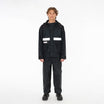



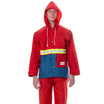


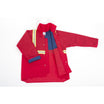

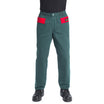



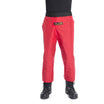




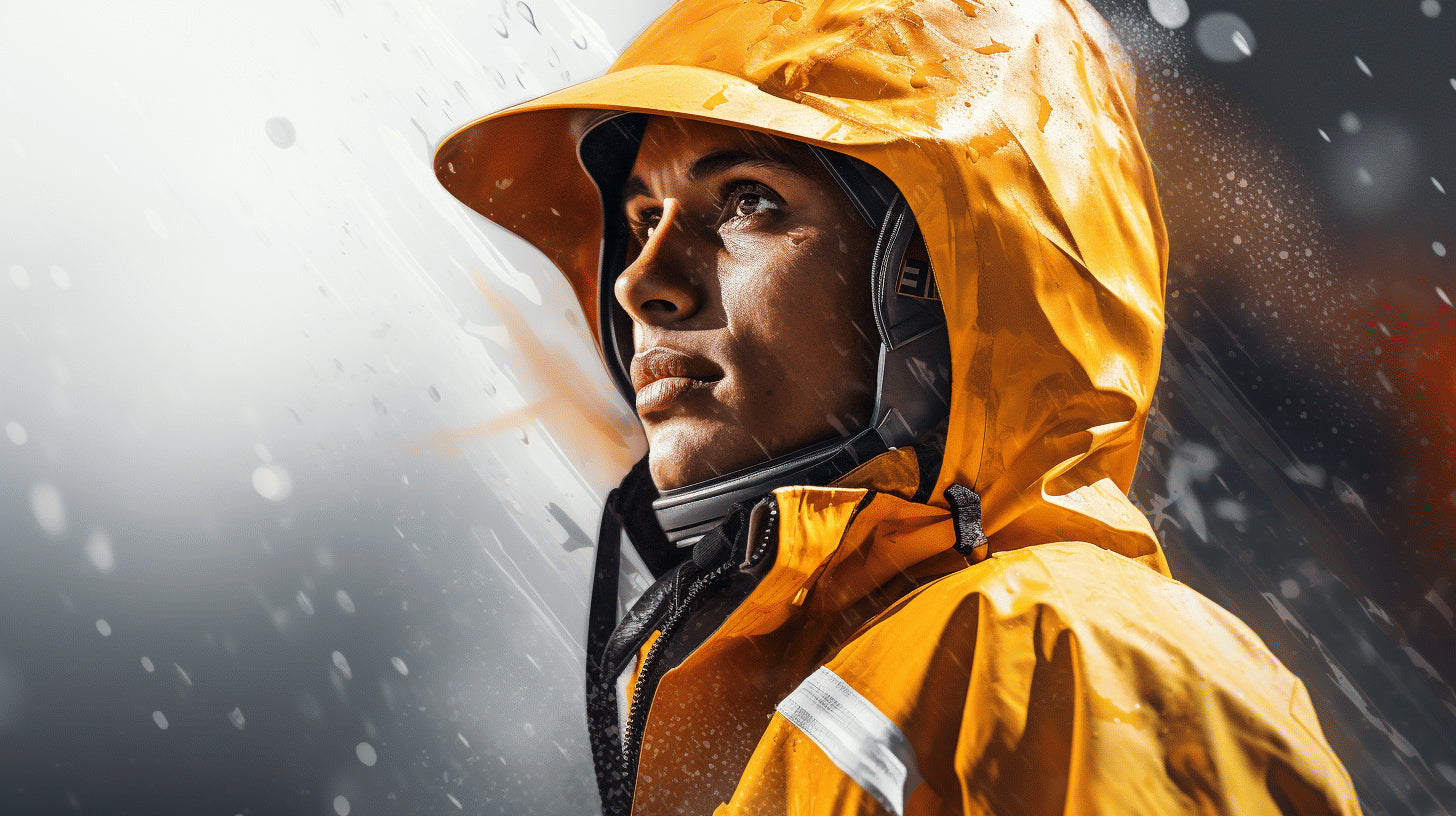

Leave a comment
This site is protected by hCaptcha and the hCaptcha Privacy Policy and Terms of Service apply.